New Tanks
Material
The new tanks are 1/4" 5000 series aluminum. I won't launch into the whole debate over the best material for tanks, my personal decision was for aluminum. I selected 1/4" to allow some damage without compromising the integrity of the tanks and also to eliminate 'oil-canning', the popping thin-wall tanks make as the sides expand and contract during filling. This movement affects the proximity of sensors to the bottom of the tank, thin-walled tanks require more space between sensors and the bottom.
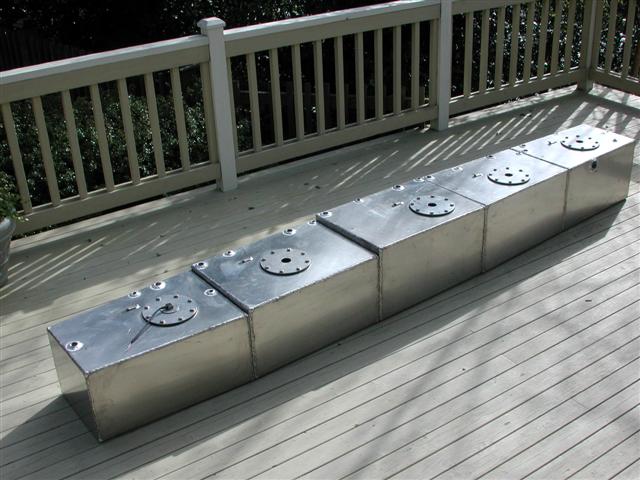
New tanks fresh from Ballard Sheet Metal
I provided Ballard Sheet Metal with drawings for each tank in addition to the mockups. Dimensions on the drawings took precedence over the mockups, the mockups were used to locate all openings in the tanks. The bottom and long sides of each tank were made by bending a single sheet, eliminating two long welds at the bottom of each tank.
Tank Fittings
The tanks were manufactured with welded aluminum half-couplings for all tank penetrations. All plumbing fittings screwed into the tank are series 316 stainless steel. Bronze/brass fittings may be used in other places, but stainless steel fittings separate all other fittings from the aluminum tanks.
Each tank has a fuel pickup, return, vent, sounding opening, fill, high level alarm, and an 8" access plate. The day tank has two additional fuel pickups, one for the diesel heater, the other for a DC generator. The day tank fill is not used; the only way to fill the day tank is through the transfer pump. A welded tab was added to the top of each tank for a ground connection.
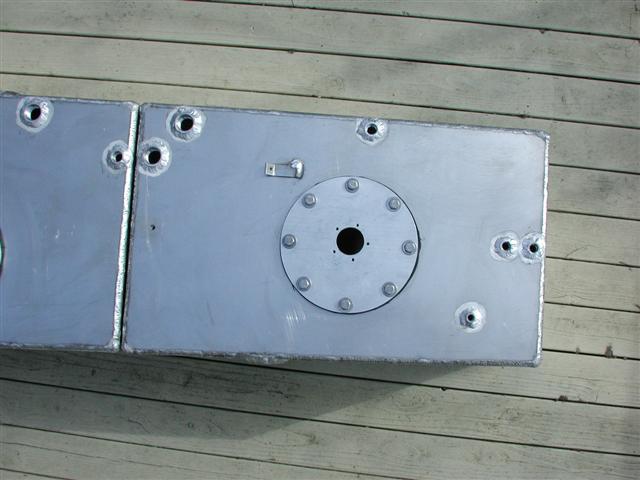
Day tank fittings and access
Instrumentation
I decided on Wema voltage-divider type sensors and gauges. They will be installed in the 8" access plate for each tank, allowing complete replacement without re-working the actual tank. I consider this type of sender to be user repairable and therefore a better choice for a cruising boat. There are some pretty nifty senders out there that use air pressure or capacitance to determine fluid level; I do not have the confidence I would be able to repair them in the middle of the Pacific.
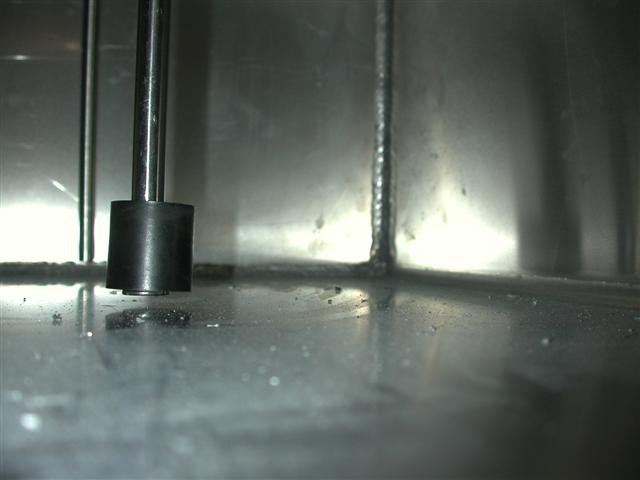
Thin-walled tanks would have required more clearance between the sender and the tank bottom
I also installed a stainless steel high level float switch in a coupling on the underside of the tank top. This switch will function as a high-level alarm and also may be wired into the transfer pump controls for automatic shutoff.
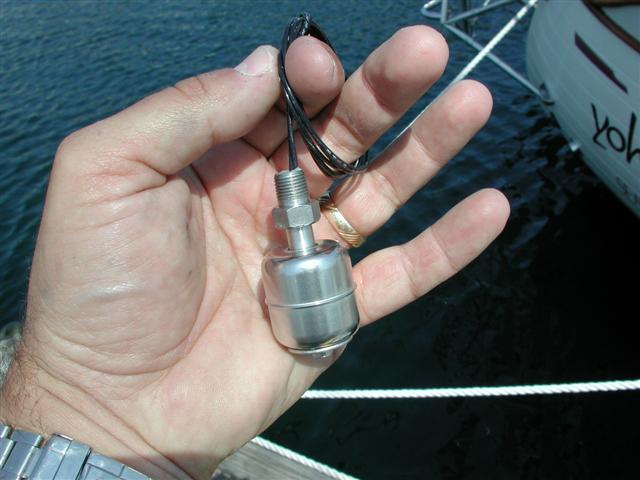
Stainless steel float switch for high-level alarm
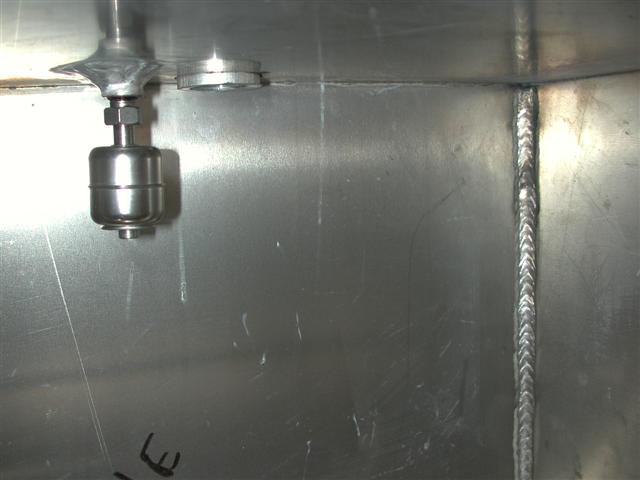
High level float switch installed
Painting
The tanks were painted with two coats of Formula 150 Epoxy paint from International Paints. It is a two-part epoxy that does not require a primer when used with aluminum. It was easy to apply with a roller and will be easy to repair. It came in either navy gray or white, I chose gray since aluminum oxide is white and easier to see against the gray background. Spilled fuel is easily visible against either color.
Fuel Pickup Tubes
The original tank drawings included an aluminum pick up tube welded to the underside of each tank top. There are many opinions out there regarding the clearance between the bottom of the tube and the tank with most recommendations somewhere around 1". The reason is to avoid potential filter-clogging junk in the bottom of the tank. Since I was using a day tank and intended on keeping the tanks clean I felt I could get away with a lot less clearance but couldn't afford the mistake in welded tubes.
I removed the welded-pickup-tube requirement from the tank drawings. It is possible to weld stainless steel tubing as long as the wall thickness was at least 1/16" so I ordered 1/4" ID SS tubing and high-pressure SS NPT elbows. Ballard Sheet Metal welded the tubes to the fittings, providing me with removable pickup tubes for each tank. These can be removed for repairs and the length is easily modified. I decided to start 'long' and cut the pickup tubes to clear the tank bottom by 1/4". During tank calibration I discovered this leaves a TOTAL of 1-1/8 gallons of fuel for ALL five tanks. My usable capacity is 108.3 gallons. If I have clogging problems in the future I can easily shorten the pickup tubes.
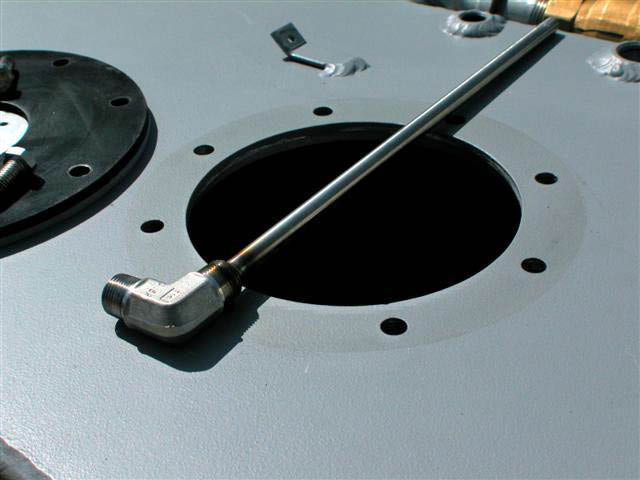
Stainless steel fuel pickup tube
I staggered the length of the pickup tubes in the day tank. The engine pickup is 1/4' off the bottom, the generator pickup 1-1/2" off the bottom, the espar a full 2-1/2" off the tank bottom. This will prevent the heater or generator from running the tank dry.
Forward to Pre-Installation Page